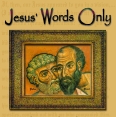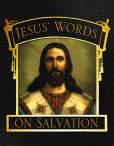Jewish Canon as of 200 BCE and Time of Christ
The Jewish canon by Jesus' day was divided up in Law, Prophets and Writings. The Law was called Torah. The Prophets section was called Nev'im. The Writings section was called Ketuvim. ( PBCC DOCTRINAL STATEMENT at 2.)The Prophets section was finalized around 200 BCE. The Writings section, Ketuvim, was referred to in a Greek commentary on Ecclesiasticus as "other books" -- when it mentioned "the law and prophets and the other books of our fathers." (See John Haralson Hayes, Introduction to the Bible (1971) at 21.)
The Sadducees only accepted the Torah as inspired, and the "other books were prized and read as edifying books." Id., at 22. The Jews of Alexandria and Egypt accepted the Torah as inspired, but also "revered the Prophets and Writings." Id. The Samaritans only accepted the Torah as inspired and to be revered. Id. Thus, Sadducees and Samaritans rejected the Writings section as inspired. It was edifying.
The book of Daniel is found in the third section of the Hebrew Bible known as the 'Writings,' rather than the second section 'the Prophets.' (Joel Osteen, Hope for Today Bible (2009) at 951.)
Jesus spoke of the "Law and the Prophets" never fading away. He never spoke the same about the "Writings" (Kevutim) which, had Jesus done so, would have meant He adopted the Pharasaical view of the Bible. Jesus thereby deliberately drops off the expanded Pharisaical view of the Bible when Jesus speaks only of the validity of the "Law and the Prophets" (Matt. 5:17.) See also Acts 28:23 ("tried to convince them about Jesus from the Law of Moses and from the Prophets.")
The way the ancient Jews divided canon was also done by explaining three levels of inspiration with the Law and Prophets clearly trumping the third level. While for a Christian these three levels would all appear equal, the point is that this is how Rabbis back then explained the three tiers of the canon so that "Writings" (Ketuvim) would never be on par with the Law and Prophets. In an article entitled "Inspiration" by Rev. James Gardner from 1858, we read:
The Jews were accustomed to speak of three different degrees of inspiration. Moses, they alleged, possessed the highest degree, with whom God spake mouth to mouth; the second, according to their view, was the gift of prophecy; and the lowest, the inspiration of the Holy Ghost, from which proceeded the holy writings or Hagiograplia. (Rev. James Gardner, "Inspiration," The faiths of the world: an account of all religions and religious sects, their doctrines, rites, ceremonies, and customs (A. Fullarton & co., 1858) at 142.)
Indeed, Job is a book that illustrates the issue the Jews had with the Ketuvim and why they place Job within the Ketuvim despite Moses authoring Job (according to Jewish tradition).
First, in Moses's account in Job (yes, Jews say Moses wrote this), the words of the man Job are clearly not inspired like a prophet. This is because God does not appear until very late in the story, and then God speaks directly only to Job, and then says 'who is this darkening' God's counsels. (Job 38:2)(""Who is this that darkens my counsel with words without knowledge?")
Hence, for reasons such as this, the Jews did not regard the book of Job as 100% inspired. Thus, they put it in the Writings section, not the Prophets section, even though a Prophet - Moses -- wrote it by Jewish tradition!
Mistranslation of 2 Tim. 3:16 Causes Misunderstanding in NT
In Greek, ambiguity can arise in discussing the old canon. For example, if one wished to refer to the Ketuvim, meaning "Writings," there were two Greek words that interchangeably meant "Writings" or our English synonym, "Scripture" -- the words graphe and grammata. At the same time, if one wished to refer to the entire OT canon, including the Ketuvim, one could still refer to it in Greek as "writings," either graphe or grammata.Only by context could one infer whether the intent was to identify solely the Writings/Scripture section (Ketuvim) or speak about all the writings/scripture, i.e., the Torah, the Prophets and the Ketuvim/Writings.
Paul refers in 2 Tim. 3:15 to the Holy "grammata," translated as "Writings," but Paul obviously intended by calling them "Holy" to refer to the Law and Prophets.
Then in the very next verse, Paul speaks more broadly about the "graphe" which was likewise translated into English as "writings." As we shall see, Paul meant by "graphe" here - rendered as "Scripture" -- to include the entire Torah, Prophets and Writings/Ketuvim. Cfr. reference to just Torah and Prophets was "Holy Writings" (Greek, grammata) (Rom. 1:2; 2 Tim. 3:15). Cf. Jesus' usage of graphe in Matt. 21:24-23; 22:29-32.
This is because Paul's manner of expression implied that some Scripture / graphe is not always inspired, and thus graphe's use in 2 Tim. 3:16 must have been inclusive of the Ketuvim section unlike 3:15 where grammata meant to identify just the 100% 'holy' or 'inspired' books of Torah and Prophets. Upon becoming a Christian, Paul must have given up the Pharisaical view that the Ketuvim section too was entirely inspired, but after becoming a Christian Paul adopted Jesus' view that the "Law and the Prophets" are what have a 100% validity that will never expire. (Matt. 5:17.)
To realize this, we must observe that one of the most often mistranslated verses in the NT canon is 2 Tim. 3:16. The mistranslation gives an exaggerated sense of what the term "Scripture" (Writings/graphe) distinct from "Holy Writings" (2 Tim. 3:15, grammata) meant in Paul's usage. The way 2 Tim. 3:16 typically reads is: "All Scripture [is] given by inspiration of God, and is profitable."
However, the word "is" has been put in italics or brackets in various translations because it is not found in the original Greek text. It was added to our Bible text by the translators, believing it was understood at that juncture but was inadvertently unexpressed. The American Standard Version of 1901, however, realizes this was improperly adding to Paul's words, and drops the "is" at that point, thereby dramatically giving us a new perspective. Now we see the "is" only appears before the word profitable, but not also before "God-breathed." The corrected translation, and the literally accurate one, is:
The scholar George Ricker Berry, in his Interlinear KJV New Testament (1993) likewise renders it literally as saying "Every Scripture God inspired is profitable." Today, it is a recognized alternative rendering.Every scripture inspired of God is also profitable for teaching, for reproof, for correction, for instruction which is in righteousness. (ASV, 1901, 2 Tim. 3:16.)
Hence, as expressed, Paul implies not every Scripture is inspired,i.e., only some places within the KEVUTIM are inspired by God. But those which are entirely inspired, i.e., the Torah and Prophets, and some portions of Kevutim, are profitable for correction, etc.
This implication means we should prefer to see Paul recognized, consistent with Jesus never affirming the entire validity of the Ketuvim section, that the word graphe we translated as "Scripture" was broad enough to include the entire Jewish canon which had one part -- the Ketuvim -- which at moments was inspired but at other moments was not inspired. Thus, you could have Scripture that was not God-breathed and some God-breathed -- when speaking of the "Writings" (Ketuvim) section of the Jewish canon.
Hence, Paul's statement fits precisely that understanding when we refuse to add to Paul what he does not say. By deleting the "is" where it was not expressed in 2 Tim. 3:16, we see in Paul's language an understanding that not every "graphe" (Scripture) is inspired of God, but instead that "Scripture inspired by God is profitable," etc. In other words, Paul is only saying "all God-breathed scripture is profitable." This implies that if it is not God-breathed Scripture (certain Kevutim portions), then such "scripture" -- even though accepted in the Writings / Scripture section of the Bible's three-fold canon of that era -- is not necessarily profitable.
NT Attitude Toward Ketuvim / Scripture Section of OT
In summary, from the third section of the Jewish Scriptures while there are plenty of quotations in the NT from Psalms - more than any other OT book - there are a negligible number of quotations from the remainder of this [third] section. ("What Does Scripture Mean")
In fact, Jesus in Matthew's Gospel only quotes the Psalms seven times and Daniel twice.
Psalms (Matthew 7:23, 21:16, 21:42, 22:44, 23:39, 26:64, 27:46, Mark 12:36, 14:62, 15:34, Luke 20:17, 20:42-43), Daniel (Matthew 23:39, 26:64, Mark 13:14, 14:62).
Jesus also names Job but does not quote from Job. These are the only references by Jesus to the Ketuvim section of the Bible.
In further support, we can cite J.W. Roberts, the famous scholar. Roberts comments on the "is" issue, and agrees with the conclusion that the verse in 2 Tim. 3:16 means every God-breathed scripture "is" profitable, not that every "scripture is God-breathed" -- a big difference. Roberts says:
The American Standard renders, "Every scripture inspired of God is also profitable . . ." It would appear from this difference in translation that the difficulties are in the words "all" or "every" and in the placing of the copula or verb "is." The fact that the verb is italicized in both versions indicates that it is in ellipsis (understood) in the context....[However, Paul means] "every Scripture" inspired in the same manner as the Old Testament, may be used as religiously profitable, for the Christian. (J.W. Roberts, "Every Scripture Inspired of God," Restoration Quarterly Vol. 5, No.1 (1960), available online.)
Moreover, rather than graphe being used to refer to possibly a NT body of writings, scholars believe that "graphe" must mean the entire OT, including the less than always inspired Ketuvim section. For example, in Guthrie's Commentary on the Pastoral Epistles (1957) in the Tyndale Commentary series, we read on page 163, in the commentary on verse 16 of 2 Tim. 3:
... graphe could mean any writing, but the uniform New Testament use of it with reference to Scripture (i.e. the Old Testament) determines its meaning here.
Peter Used Graphe For Less Than 100% Always Inspired Writings
This indeed is how Peter used the term "Scripture" in Second Peter 3:15-17 when he put on par Paul's writings among "other" Scripture. Peter could not possibly have meant everything Paul said was inspired, as Paul made explicitly clear that he said many things that were not inspired in his letters. When speaking for the Lord, Paul said "the Lord" gave him the message, as was an OT requirement to be treated as inspired-writ, and yet at other times Paul emphasized he was speaking on his own in his letters. Hence, Paul cannot be viewed as Scripture that is inspired in every word, for Paul denies for himself that very interpretation.First, in Paul's own words, he once said "I speak not by Commandment ... and herein I give my advice" (2 Cor. 8: 8-10). Paul's "advice" undoubtedly was good, but he certainly did not mean it was the Word of God. Likewise, in this next quote from 1 Corinthians, note the two different sources of the commands which Paul has written: "Unto the married I command, yet not I, but the Lord .., but the rest is from me, not from the Lord” (I Cor. 7:10-12). Paul in saying this did what OT principles required for recognition of a statement as inspired -- he said the message was from "the Lord." Finally, here is another quote which definitely tells us that some of Paul's utterances and admonishments were of his own making: “Now concerning virgins I have no commandment of the Lord: but I give my own opinion” (1 Cor.7:25 ). See also 2 Cor. 11:17 ("What I am going to say now, is not prompted by the Lord, but said as if in a fit of folly, in the certainty that I have something to boast about”)
Hence, Paul did not understand he was always speaking under inspiration. When he wanted that understood, Paul followed the OT requirement of saying the "Lord" burdened him with a message.
Hence, by Second Peter 3:15-17 referring to Paul's letters as "Scripture," Second Peter meant Paul fit within the very broad meaning of graphe, i.e, the OT inclusive of Ketuvim/ Writings, the latter being not always inspired in every word. Second Peter realized that one would have to read carefully to find Paul's references to the Lord speaking, and then it could be deduced that portion was inspired if it matched other OT criteria of the prophetic.
Therefore, we have jumped to conclusions what Paul and Peter meant when referring to Scripture that they meant to imply it was something always "inspired" rather than as edifying and only sometimes inspired, which had to be determined by context and the satisfaction of the definition of the prophetic in the OT. Of course, it remains true that "all God-breathed Scripture is profitable." (2 Tim. 3:16.) Yet, it did not mean all Scripture in the OT canon was inspired -- a mistaken interpretation fostered by earlier mistranslations of 2 Tim. 3:16.
Early Church Understanding of Inspiration
This distinction is important in reading the commentary in the early church. The early fathers were reluctant to give letters of apostles the same authority as the prophetic. Although this gradually gave way to a more comprehensive belief in 100% inspiration for even letters, this is not how the Christian faith began. As Reverand Gardner explained in 1858:The Fathers [i.e., Christian commentators from 125-325 A.D.], however, differed in their views of inspiration; some took it in a more restricted, others in a more comprehensive sense, But they were usually more inclined to admit verbal inspiration in the case of the Old than of the New Testament; and it was not till the canon of the New Testament had been completed, that they adopted concerning it the views which they had long entertained concerning the verbal inspiration of the Old Testament. (Rev. James Gardner, "Inspiration," The faiths of the world: an account of all religions and religious sects, their doctrines, rites, ceremonies, and customs (A. Fullarton & co., 1858) at 142.)



